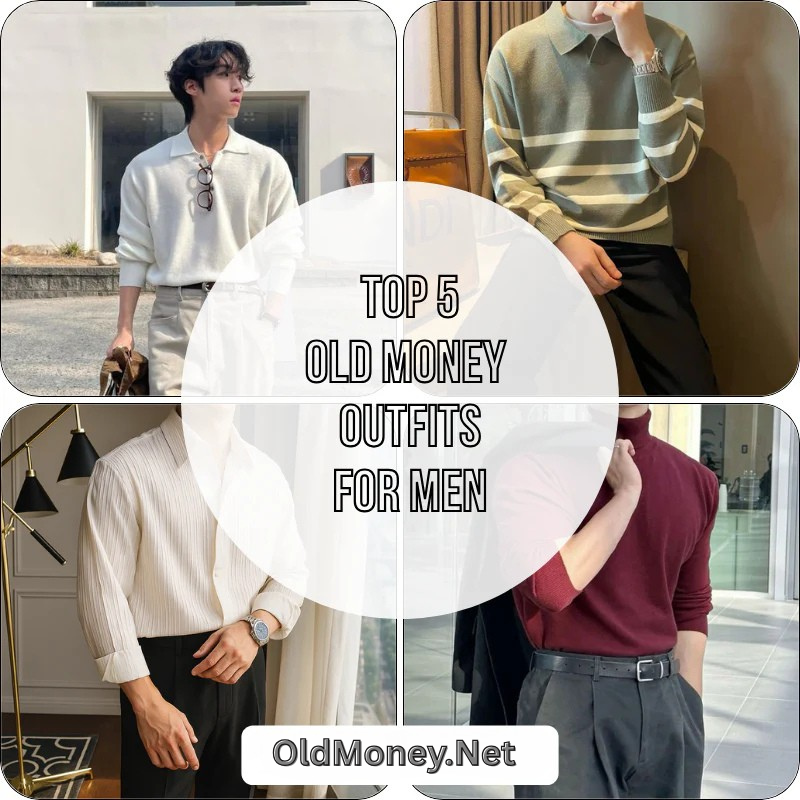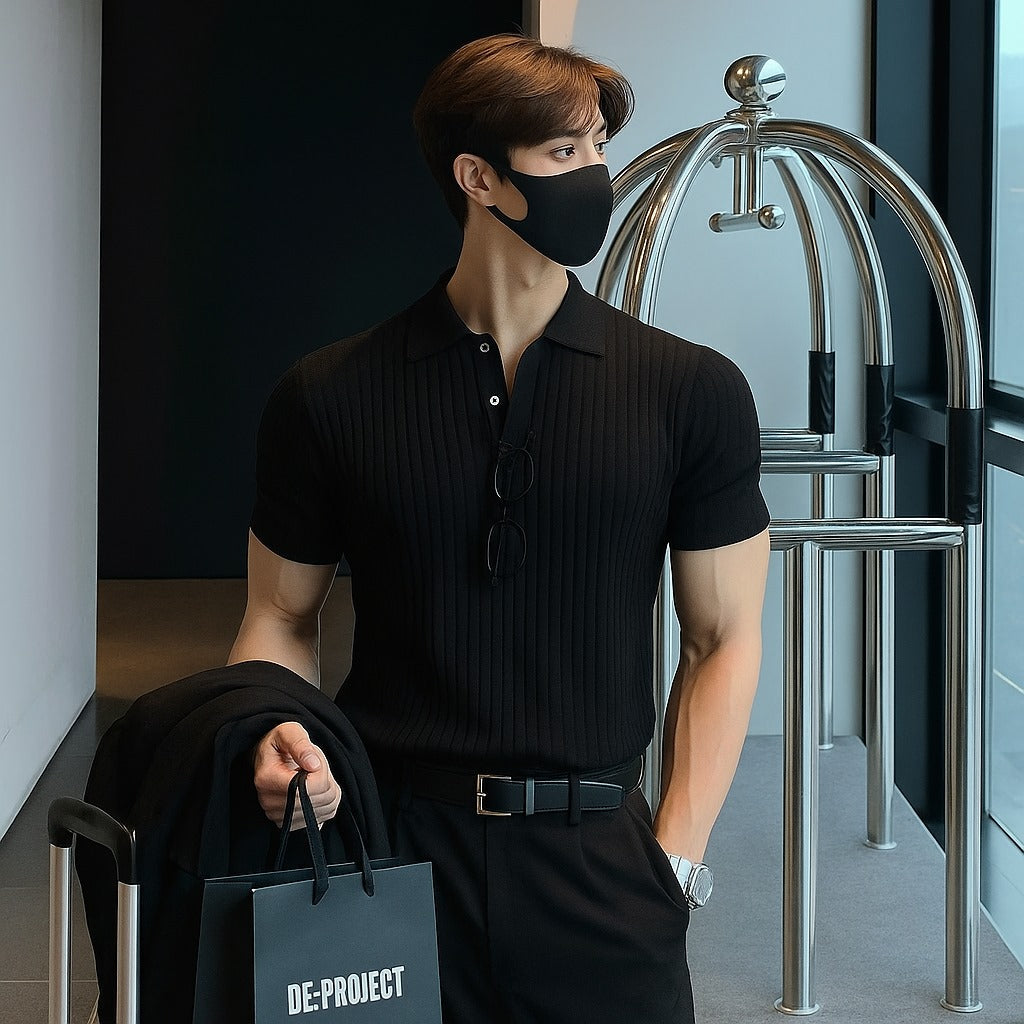
Top 5 Old-Money Style Outfits for Men
Why Quiet Luxury Still Turns Heads?
Scroll any 2025 fashion feed and you’ll hit quiet luxury men’s outfits like loose-cut navy blazers, calfskin loafers, linen trousers that look breezy yet cost more than a weekend away.
What many don’t realize is that the new craze is simply old-money style under fresh branding. Generational-wealth wardrobes taught these rules a century ago—neutral palettes, natural fabrics, relaxed fits, and an attitude that whispers rather than shouts. GQ’s editors even list “old-money quiet luxury” as a headline trend in their 2025 men’s forecast.(GQ)
Below are five timeless outfits every man can build today. Each look lists core pieces, styling tips, and budget-friendly swaps. You’ll also find smart picks from three rotating oldmoney.net collections:
-
Here is the link for Old-Money Shoes collection.
We’ll also cite two highly respected sources so Google sees solid authority—not sales fluff.
1. The Seaside Weekend Uniform
Why it works: East-Coast heirs have refined this combo since the 1920s. Lightweight layers handle shifting breezes; colors echo sand and sky.
Core pieces
-
White linen button-down with a soft spread collar
-
Stone-colored tailored chinos
-
Navy cashmere-cotton cable-knit sweater, draped over shoulders
-
Brown suede loafers from the Old-Money Shoes collection
-
Matte-cream rubber dive watch on a sand NATO strap from Old-Money Watches
Styling notes
-
Fabric first. Linen breathes; a cotton-cashmere blend insulates during sunset sails.
-
Shoulders, not waist. Old-money men tie the sweater’s arms lightly across the back, never knotted tight at the chest—a small cue of nonchalance.
-
Suede loves salt. It’ll scuff and patina fast, which is the point: wear shows life.
Authority insight: GQ’s 2025 summer report says linen-heavy ensembles outsold traditional polos for the first time, citing “quiet luxury men’s outfits” as a prime search driver for May and June.
2. The City Boardroom Blend
Why it works: Old money distrusts power suits that glow under office LEDs. Instead, it mixes subtle texture shifts and mid-tones that read serious but relaxed.
Core pieces
-
Mid-grey worsted wool suit in a soft-shoulder, two-button cut
-
Cream pinpoint-oxford shirt
-
Dark-green shantung tie (no flashy sheen)
-
Black calf cap-toe Oxfords—again via Old-Money Shoes
-
Polished steel dress watch with slim bezel from Old-Money Watches
-
Camel covert-cloth topcoat from Old-Money Coats & Jackets for winter commutes
Styling notes
-
Drape over structure. The suit skims the shoulders; no roped pads. This nods to Neapolitan tailoring—an old-money favorite because comfort trumps crisp military lines.
-
Color depth, not contrast. Dark-green beats corporate red; it’s interesting yet subdued.
-
Topcoat length. He should hit mid-knee. Short coats look trendy; long ones feel perennial.
Research bite: Harvard Business Review reports that neutral, well-tailored outfits boost investor trust more than “power suits,” linking non-verbal cues to credibility. (Harvard Business Review)
3. The Country Estate Layer Stack
Why it works: British shooting parties, Tuscan vineyard walks, Vermont cider mill tours—this outfit masters micro-climate shifts without sacrificing polish.
Core pieces
-
Olive cotton-twill chore jacket from Old-Money Coats & Jackets
-
Rust-brown cashmere crew-neck
-
Light-blue chambray button-down
-
Oatmeal flannel trousers with single pleat
-
Chocolate grain-leather derby boots (water-resistant) via Old-Money Shoes
-
Vintage-style field watch with linen strap out of Old-Money Watches
Styling notes
-
Texture ladder. Smooth chambray inside, fuzzy cashmere mid-layer, rugged twill shell: roughness increases outward.
-
Earth-tone palette. Olive, rust, and oatmeal sit a color wheel apart but remain muted—classic old-money trick for depth without pop.
-
Functional pockets. Chore jackets carry gloves, field notebook, flask—utilitarian heritage trumps decorative zips.
Pro tip: After mud hikes, brush boots dry rather than washing. Old-money leather shows adventures, not soap.
4. The Black-Tie Shortcut (Yes, They Cut Corners Too)
Why it works: True old money owns white-tie tails, but few events demand them. Instead, they tweak black tie for ease—yet still eclipse rental tuxes.
Core pieces
-
Midnight-blue single-button tuxedo (midnight looks richer than black under evening lights)
-
Pleated white dress shirt with onyx studs
-
Self-tie grosgrain bow tie
-
Patent-leather opera pumps from Old-Money Shoes
-
Slim gold dress watch on black lizard strap from Old-Money Watches
-
Optional: velvet shawl-collar dinner jacket from Old-Money Coats & Jackets for holiday galas
Styling notes
-
Skip the belt. Side adjusters keep lines clean; suspenders if needed remain hidden.
-
Velvet jacket swap. Old-money men swap jackets mid-season instead of buying a full second tux.
-
Opera pumps vs. lace-ups. Pumps—low-cut and ribboned—signal you actually own black-tie gear, not just rent it.
5. The Casual Friday Sail-Prep Hybrid
Why it works: Businesses accept jeans; old money still chooses cotton drill or moleskin—comfort with gravitas. This outfit glides from last-minute client lunch to a 30-footer’s deck.
Core pieces
-
Navy cotton drill blouson (half-lined) from Old-Money Coats & Jackets
-
Striped Breton tee (ecru/navy)
-
White moleskin five-pockets (heavier, dressier than denim)
-
Sand nubuck desert boots from Old-Money Shoes
-
Stainless-steel sport watch with weathered leather strap from Old-Money Watches
Styling notes
-
Breton tee heritage. Coco Chanel popularized it, but yacht crews kept it timeless; stripes feel nautical without scream.
-
Break at boots. Hem should kiss boot tops—no stacking, no highwater.
-
Blouson band length. Ends just below the belt to define waist; longer jackets sag.
Putting It All Together: The Old-Money Outfit Matrix
Below is a quick-reference grid to mix and match elements beyond the five set looks.
|
Layer |
Fabric |
Color Range |
Swap Ideas |
|
Foundation |
Oxford, chambray, linen |
White, sky, cream |
Breton tee for play days |
|
Mid-Layer |
Cashmere, merino, fine-gauge cotton |
Camel, rust, forest |
Silk-wool blend for travel |
|
Outer Shell |
Tweed, twill, velvet |
Navy, olive, midnight |
Waxed cotton for rain |
|
Trousers |
Flannel, chinos, moleskin |
Grey, stone, oatmeal |
Single-pleat shorts in high summer |
|
Footwear |
Loafer, derby, pump |
Espresso, black, sand |
Whole-cut oxford for minimalists |
Use the matrix to rotate through seasons while keeping the quiet-luxury DNA intact.
Care, Repair, and Patina: The Silent Status Markers
-
Brush, don’t wash, wool. Wool fibers contain lanolin that self-cleans; over-laundering kills the luster.
-
Suede steam reset. Hold shoes above kettle steam, brush with horse-hair—nap lifts like new.
-
Rotate watches. Mechanical movements need use; idle rotors gum up. Wear each piece at least once a month.
-
Re-line coats. A €120 lining refresh extends a tweed’s life by a decade—cheaper than one fast-fashion parka.
-
Document repairs. Old-money families note cobbler dates; provenance boosts heirloom vibe.
Common Mistakes That Break the Spell
-
Logo creep. A tiny polo pony equals fine; giant monogram kills subtlety.
-
Over-tailoring. Painted-on pants read nouveau riche. Aim for gentle drape.
-
Synthetic shine. Polyester reflects flash photos, outing imposters.
-
Wrong socks. White gym socks with loafers betray ignorance; go ribbed merino or silk/cotton mix.
-
Unpolished footwear. Scuffs should look earned, not neglected. A 30-second buff keeps distinction clear.
Why Old-Money Style Thrives in 2025
-
Economic caution. Shoppers hedge inflation by buying fewer, better garments; slow fashion aligns with inheritance culture.
-
Algorithm fatigue. Consumers rebel against micro-trend churn; evergreen outfits offer relief.
-
Work-from-anywhere reality. Soft-shoulder jackets and chore coats pivot from Zoom to in-person, beating rigid suits.
-
Cultural capital. Knowing how to tie a bow tie or fold a pocket square signals social fluency—a non-digital flex.
Final Playbook
-
Start with shoes. Swap plastic-soled dress shoes for welted leather from the Old-Money Shoes range; build upward.
-
Master one jacket. A navy hopsack blazer from Old-Money Coats & Jackets can anchor three of the five outfits above.
-
Invest in time. A serviced mechanical piece from Old-Money Watches says legacy louder than any drone shot of your house.
-
Join the repair club. Record cobbler visits, tailor tweaks, and watch services; patina + notes = heritage.
-
Keep learning. Read GQ’s deep dive on linen tailoring and Harvard Business Review’s study on non-verbal executive presence for constant refinement.
Conclusion: Dress Quiet, Speak Volumes
Old-money style isn’t about being born rich—it’s about dressing as if your clothes, like your reputation, need to last a lifetime.
Each of the five outfits above balances heritage fabrics, museum-grade construction, and effortless fit. Swap elements seasonally, lean on timeless palettes, and you’ll project confidence that outlives trends.



